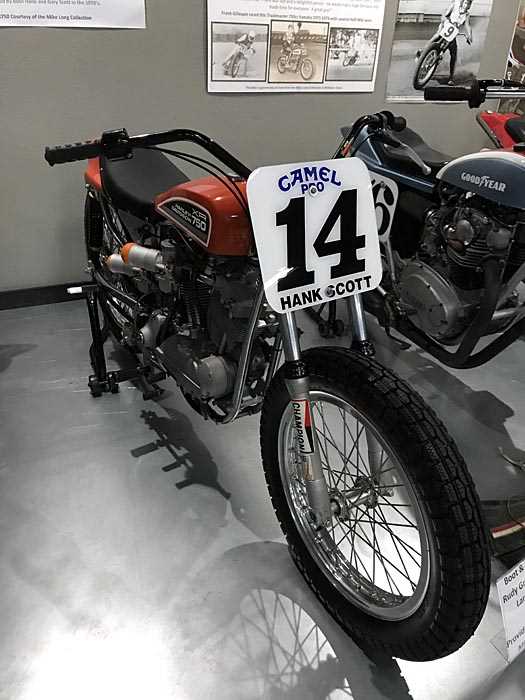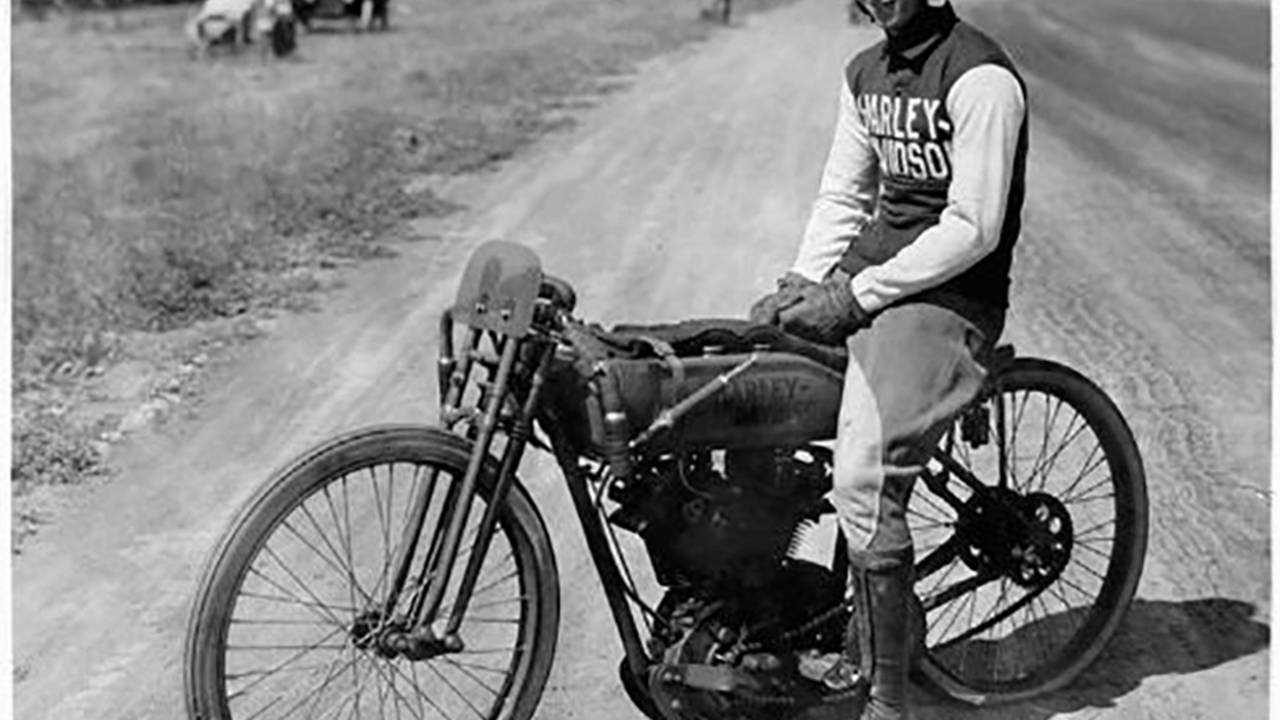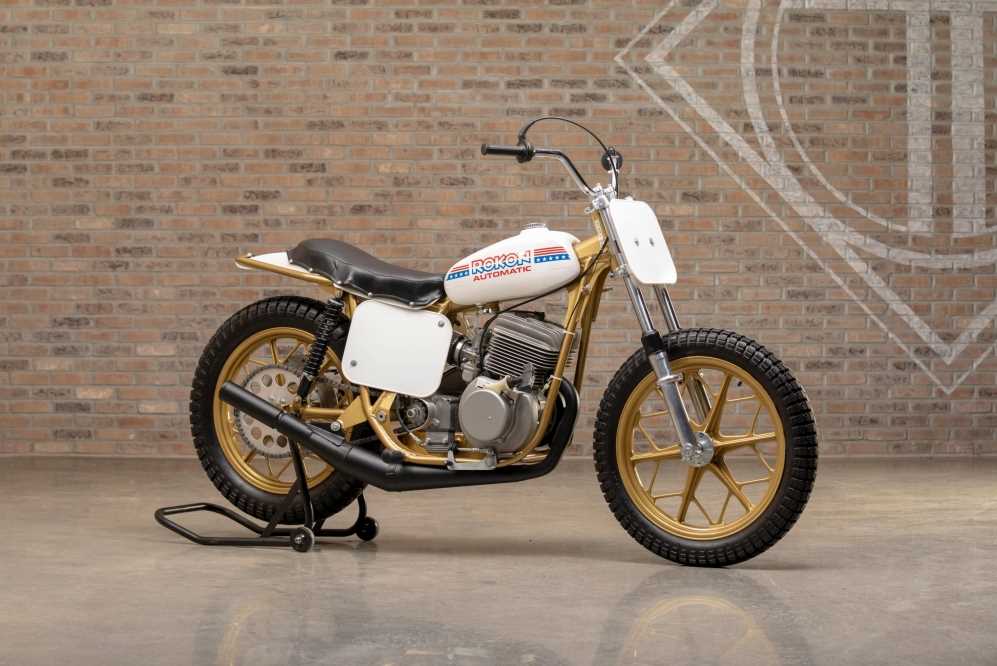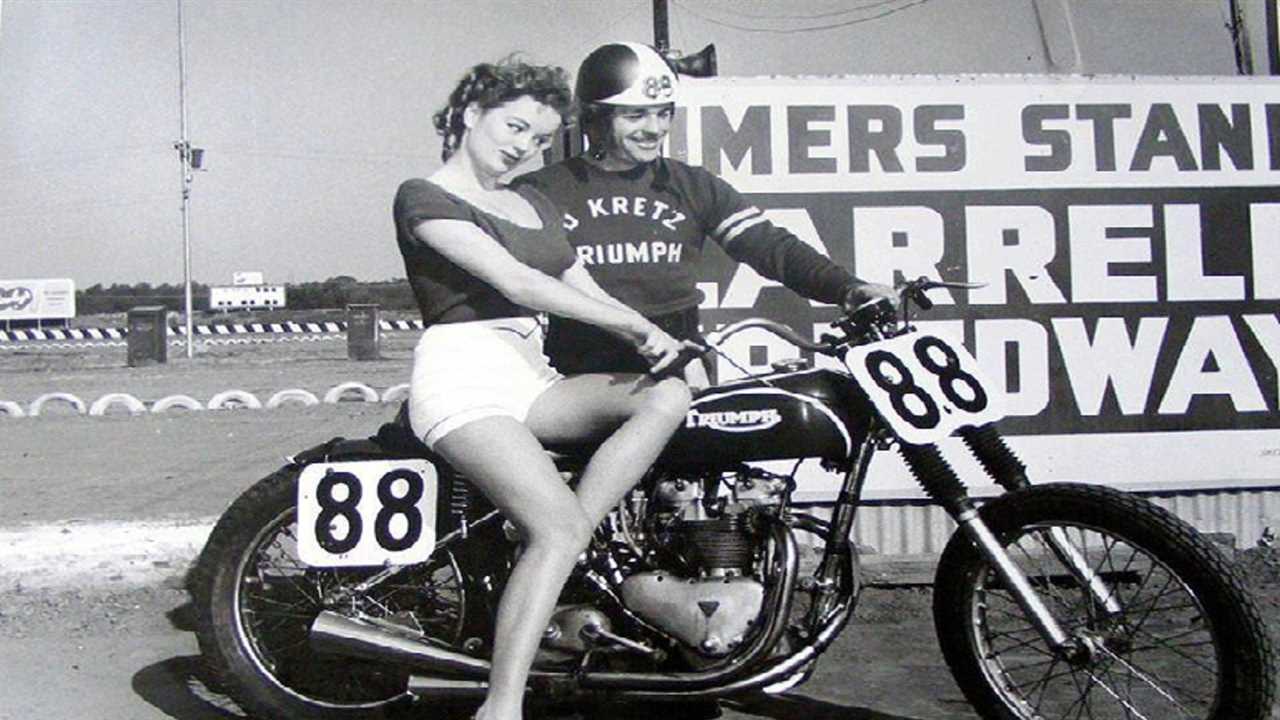
Flat track racing, also known as dirt track racing, has a long and storied history in the world of motorcycle racing. This thrilling sport traces its roots back to the early 20th century, when daredevil riders would take to the dirt tracks on their vintage motorcycles, pushing the limits of speed and skill.
Today, flat track racing has evolved into a highly competitive sport, with modern motorcycles reaching incredible speeds on specially designed tracks. However, there is still a deep appreciation for the vintage flat track motorcycles that paved the way for this exhilarating sport.
These vintage machines, with their stripped-down frames and powerful engines, evoke a sense of nostalgia and a connection to the early days of motorcycle racing. Each bike tells a story, with its scars and patina serving as a testament to the countless laps it has completed on the track.
There is something truly special about witnessing a vintage flat track motorcycle in action. The roar of the engine, the smell of burning rubber, and the sight of riders leaning into turns with incredible precision create an unforgettable experience for spectators.
Whether you are a fan of vintage motorcycles or a racing enthusiast, exploring the world of vintage flat track motorcycles is a journey through racing history that is sure to leave you with a deep appreciation for the pioneers of this thrilling sport.
Contents
The Origins of Flat Track Racing

Flat track racing has a long and storied history that dates back to the early days of motorcycle racing. The sport originated in the late 19th century, when motorcycles were first being developed and riders began to test their skills on the track.
One of the key features of flat track racing is the type of track on which it is conducted. Unlike traditional road racing, which takes place on paved circuits, flat track racing is held on dirt tracks. These tracks are typically oval-shaped and consist of a flat surface without any jumps or obstacles.
The vintage flat track motorcycles used in these early races were simple and lightweight machines, designed specifically for racing on dirt tracks. They featured powerful engines and wide tires with aggressive tread patterns to provide maximum traction on the loose dirt surface.
Flat track racing quickly gained popularity in the United States, with events being held at fairgrounds and other venues across the country. The sport attracted a dedicated following of fans who enjoyed the close and competitive racing action.
Over the years, flat track racing has evolved and grown, with advancements in motorcycle technology and changes in racing regulations. However, the roots of the sport can still be seen in the vintage flat track motorcycles and the thrilling races they participate in today.
Early Motorcycle Racing

Vintage flat track motorcycles have a rich history in the world of motorcycle racing. The early days of motorcycle racing were filled with excitement and danger as riders pushed their bikes to the limit on dirt tracks.
Flat track racing became popular in the early 20th century, with riders competing on oval tracks made of dirt or grass. The sport quickly gained a following, attracting both riders and spectators who were drawn to the thrill of the races.
These early races were a true test of skill and endurance. Riders had to navigate tight turns and maintain control of their vintage motorcycles as they raced at high speeds. Crashes were common, and riders often sustained injuries in their quest for victory.
One of the most famous early motorcycle races was the inaugural Isle of Man TT in 1907. This race, held on public roads, showcased the speed and agility of the vintage flat track motorcycles. It quickly became a prestigious event in the racing world, attracting top riders from around the globe.
As motorcycle technology advanced, so did the sport of racing. The introduction of suspension systems and improved tires allowed riders to push their bikes even harder, leading to faster lap times and more intense competition.
Today, vintage flat track motorcycles are still raced in events around the world. These races pay homage to the early days of motorcycle racing and the brave riders who paved the way for the sport we know today.
| Year | Event | Winner |
|---|---|---|
| 1907 | Isle of Man TT | Charles Collier |
| 1911 | Indianapolis 500 | Ray Harroun |
| 1924 | French Grand Prix | Giuseppe Campari |
Evolution of Flat Track Racing

Flat track racing has a rich history that dates back to the early days of motorcycles. The sport has evolved over time, with changes in technology, rules, and the types of motorcycles used.
In the early years of flat track racing, motorcycles were simple and lightweight. Riders would compete on dirt tracks, often with no brakes, relying solely on their skill and control to navigate the corners and maintain speed. These early races were thrilling and dangerous, with riders pushing the limits of their machines and their own abilities.
As the sport grew in popularity, manufacturers began to develop specialized motorcycles for flat track racing. These bikes featured larger engines, improved suspension, and better brakes, allowing riders to push even harder and achieve higher speeds. The introduction of these purpose-built machines led to faster races and more intense competition.
Over the years, flat track racing has seen various rule changes and modifications to keep the sport exciting and competitive. Different classes and divisions were introduced to accommodate different types of motorcycles, such as singles, twins, and four-strokes. These changes allowed for a wider range of riders to participate and showcase their skills.
Today, flat track racing continues to evolve. Modern motorcycles are more advanced than ever, with cutting-edge technology and engineering. Riders wear specialized gear for safety and protection. Tracks are meticulously designed and maintained to provide the best possible racing experience.
Despite these advancements, the essence of flat track racing remains the same. It is a sport that celebrates the skill, bravery, and camaraderie of the riders. Whether it’s on a vintage motorcycle or a modern machine, flat track racing continues to captivate audiences and provide a nostalgic ride through racing history.
Iconic Flat Track Motorcycles

Flat track motorcycles have a long and storied history in the world of racing. These iconic machines have been tearing up the track for decades, thrilling fans with their speed and agility.
One of the most famous flat track motorcycles is the Harley-Davidson XR750. This legendary bike dominated the sport in the 1970s and 1980s, winning numerous championships and setting records along the way. With its powerful V-twin engine and sleek design, the XR750 became synonymous with flat track racing.
Another iconic flat track motorcycle is the Indian Scout FTR750. This modern-day powerhouse has taken the racing world by storm, winning multiple championships and earning the respect of riders and fans alike. With its lightweight frame and high-performance engine, the Scout FTR750 is a force to be reckoned with on the track.
The Yamaha TZ750 is another legendary flat track motorcycle. This two-stroke beast was known for its speed and agility, and it dominated the racing scene in the 1970s. With its distinctive blue and white paint job and powerful engine, the TZ750 left a lasting impression on fans and competitors alike.
Flat track motorcycles have played a significant role in the history of racing, with these iconic machines becoming symbols of speed, power, and precision. From the Harley-Davidson XR750 to the Indian Scout FTR750 and Yamaha TZ750, these motorcycles have left an indelible mark on the sport and continue to thrill fans to this day.
Indian Scout

The Indian Scout is a vintage flat track motorcycle that has become an icon in racing history. It was first introduced in 1920 and quickly gained popularity for its speed and agility on the track.
The Scout was known for its powerful engine and lightweight frame, making it a formidable competitor in flat track racing. Riders loved the smooth handling and quick acceleration that the Scout provided, allowing them to navigate tight corners and reach top speeds on the straightaways.
Throughout the years, the Indian Scout has continued to evolve and improve, but it has never lost its vintage charm. Even today, vintage Scout motorcycles can be seen tearing up the flat track, showcasing the timeless design and performance of these machines.
Whether you’re a fan of vintage motorcycles or a racing enthusiast, the Indian Scout is sure to impress. Its sleek lines, powerful engine, and rich history make it a true legend in the world of flat track racing.
Harley-Davidson XR750

The Harley-Davidson XR750 is a legendary motorcycle that has left an indelible mark on the world of flat track racing. Introduced in 1970, the XR750 quickly became the dominant force on the track, winning numerous championships and solidifying its place in racing history.
The XR750 was specifically designed for flat track racing, a form of motorcycle racing that takes place on oval-shaped dirt tracks. With its powerful engine, lightweight frame, and agile handling, the XR750 was perfectly suited for the high-speed, high-intensity racing that flat track demands.
One of the key features of the XR750 is its engine, a V-twin that delivers impressive power and torque. The engine has undergone several improvements over the years, but its basic design has remained largely unchanged, a testament to its effectiveness on the track.
In addition to its powerful engine, the XR750 also features a number of other performance-enhancing components. Its suspension system, for example, is designed to provide maximum control and stability, allowing riders to navigate the uneven surfaces of flat track with ease.
Over the years, the XR750 has been piloted by some of the greatest names in flat track racing, including Jay Springsteen, Scott Parker, and Chris Carr. These riders, along with many others, have achieved incredible success on the XR750, winning countless races and championships.
Today, the XR750 continues to be a popular choice among flat track racers and enthusiasts alike. Its iconic design and rich racing heritage make it a sought-after motorcycle for collectors and riders who appreciate the nostalgia and history of the sport.
| Specifications | |
|---|---|
| Engine | V-twin |
| Displacement | 750cc |
| Power | Approximately 70 horsepower |
| Weight | Approximately 300 pounds |
| Suspension | Front and rear suspension designed for maximum control |
| Brakes | Front and rear disc brakes |
Famous Flat Track Racers

Flat track racing has a long and storied history, with many legendary riders leaving their mark on the sport. These famous racers pushed the limits of their vintage motorcycles and captivated audiences with their skill and daring. Here are just a few of the most notable flat track racers:
| Name | Nationality | Achievements |
|---|---|---|
| Chris Carr | American | Seven-time AMA Grand National Champion |
| Jared Mees | American | Four-time AMA Grand National Champion |
| Scott Parker | American | Nine-time AMA Grand National Champion |
| Kenny Roberts | American | Three-time 500cc World Champion |
| Willie G. Davidson | American | Harley-Davidson motorcycle designer and former racer |
These flat track racers are just a few examples of the many talented individuals who have left their mark on the sport. Their skill and dedication to vintage motorcycles and flat track racing have helped shape the history of the sport and inspire future generations of riders.
Chris Carr

Chris Carr is a legendary figure in the world of vintage flat track racing. With a career spanning over three decades, Carr has left an indelible mark on the sport and is considered one of the greatest riders of all time.
Known for his fearless riding style and exceptional skill on the track, Carr has won numerous championships and set multiple records throughout his career. His dedication to the sport and his passion for vintage flat track motorcycles have made him a beloved figure among fans and fellow riders alike.
From his early days racing on dirt tracks to his later years as a dominant force in the professional racing circuit, Carr’s talent and determination have been evident at every stage of his career. His ability to navigate the tight turns and high speeds of flat track racing is unmatched, and he has become a true icon of the sport.
Off the track, Carr has been a tireless advocate for vintage flat track racing, working to preserve its history and promote its continued growth. He has been instrumental in organizing events and exhibitions that showcase the beauty and excitement of this unique form of racing.
With his impressive record and unwavering commitment to the sport, Chris Carr has cemented his place in the annals of vintage flat track racing history. His legacy as a rider and ambassador for the sport will continue to inspire future generations of riders and fans for years to come.
Scott Parker

Scott Parker is a legendary figure in the world of vintage flat track motorcycles. Born on October 23, 1960, in Flint, Michigan, Parker began his racing career at a young age. He quickly made a name for himself in the flat track racing scene and went on to become one of the most successful riders in the history of the sport.
Parker’s love for motorcycles started at a young age. He grew up watching his father, a former motorcycle racer, compete in local races. Inspired by his father’s passion, Parker started racing himself and quickly discovered his natural talent for the sport.
Throughout his career, Parker rode a variety of vintage motorcycles, including Harley-Davidson and Honda models. He was known for his aggressive riding style and his ability to handle the powerful machines with precision and control.
One of Parker’s most notable achievements was his record-breaking win streak in the AMA Grand National Championship. From 1988 to 1994, he won the championship title seven years in a row, a feat that has yet to be matched by any other rider.
Parker’s success on the track earned him a place in the Motorcycle Hall of Fame in 2003. He retired from professional racing in 2000 but continues to be involved in the sport as a mentor and coach for up-and-coming riders.
Today, Parker’s legacy lives on in the vintage flat track racing community. His skill, determination, and love for motorcycles continue to inspire riders of all ages to push the limits of the sport and keep the spirit of vintage track racing alive.
The Thrill of Flat Track Racing

Flat track racing is an exhilarating sport that combines the speed and agility of motorcycles with the excitement of vintage competition. These races take place on flat, oval-shaped dirt tracks, where riders navigate tight corners and power down straightaways in a thrilling display of skill and precision.
One of the most exciting aspects of flat track racing is the close proximity of the riders. Unlike other forms of motorcycle racing, flat track events often feature a pack of riders racing wheel-to-wheel, jostling for position and battling for the lead. This intense competition creates an adrenaline-fueled atmosphere that keeps spectators on the edge of their seats.
Another thrilling element of flat track racing is the unpredictability of the track conditions. The dirt surface can change throughout the race, creating different challenges for the riders. From loose dirt to hard-packed clay, each type of surface requires a different approach and adds an element of uncertainty to the competition.
Flat track racing also showcases the skill and craftsmanship of vintage motorcycles. These bikes, often stripped down to their bare essentials, are a testament to the ingenuity and innovation of their time. Watching these vintage machines tear around the track is a nostalgic experience that transports spectators back to the golden era of motorcycling.
Overall, the thrill of flat track racing lies in its combination of speed, skill, and history. Whether you’re a fan of motorcycles, vintage racing, or simply enjoy the excitement of a fast-paced competition, flat track racing offers a nostalgic ride through racing history that is sure to leave you wanting more.
The Speed and Skill

Flat track racing is a true test of skill and bravery. The track itself is a flat oval, usually made of dirt or clay. The lack of banking makes it difficult to maintain traction, especially when the bikes are sliding sideways at high speeds.
It takes a special kind of rider to excel in flat track racing. The ability to read the track and make split-second decisions is crucial. Riders must have a keen sense of timing and control, as well as the physical strength to maneuver their bikes through the corners.
Vintage flat track motorcycles are a testament to the history of the sport. These machines were stripped down to the bare essentials, with no unnecessary frills or extras. The focus was on power and agility, allowing riders to push the limits of what was possible on the track.
Today, flat track racing continues to captivate audiences with its thrilling displays of speed and skill. Whether you’re a fan of vintage motorcycles or a racing enthusiast, experiencing the excitement of flat track racing is a nostalgic ride through racing history.
Video:Exploring the Rich Racing History of Vintage Flat Track Motorcycles: A Journey Back in Time
Vintage Motorcycle Racing, Davenport, Iowa
Professional Flat Track Racer Riding Bultaco Astro Vintage Bike
80 YEAR OLD VET RACER BENO RODI #27 @ DAYTONA FLAT TRACK AHRMA VINTAGE MOTO FEST January 8, 2022

Since childhood, I’ve been fascinated with vintage scooters and motorcycles. After university, I founded a workshop that restored classics like Vespas, Lambrettas, and MZs. With my girlfriend, Akiko Tanaka, I run the workshop’s website and showcase our custom restorations at iconic rallies across Europe and North America. Our Lambretta won first place at the 2019 Euro Lambretta meet in Germany. Through our website and global events, we share our passion for restoring and riding these retro rides.
